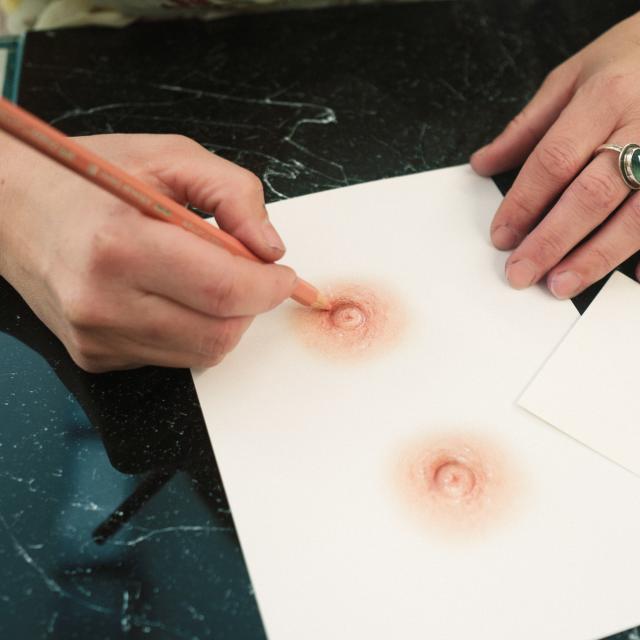
While scars make you sexy, as the saying goes, breast cancer patients find them anything but attractive. For most of them, the skin changes are memories of unpleasant times that should rather be forgotten. For them, but also for others, this wish can come true because tattoos and pigmentation provide some relief – and natural-looking nipples.
This article is provided to you free of charge. If you want to support our team and promote quality journalism, subscribe now.
Sandra Biewers first came into contact with the aesthetic aftermath of breast cancer about 15 years ago. At that time, a client came to her tattoo studio to have new nipples, including the areola, engraved after her mastectomy. "The woman had had several skin transplants, so she had pieces of skin in different colours on her chest and around them multiple severe scars", Sandra recalls. The tattoo artist created new nipples on the scarred tissue, embellishing them with artistic flourishes.
"The expression she had on her face afterwards when she saw the result in the mirror for the first time totally flashed me. It was like I had given something back to her. I will never forget that", says Sandra. The artist felt honoured, but at the same time she realized her own immaturity, because tattooing cancer patients is much more than just stabbing them with a needle. "There is a lot of trauma behind it, so you have to be able to handle that as an artist", says the 38-year-old. The subject never let Sandra go, but when she attended a tattoo summit in America a few years ago and again came across it, she realized she still wasn't ready for it.
Years of not looking in the mirror
It wasn't until just before the Corona crisis that the right click finally came and Sandra sent in her application file to the Sauler Institute of Tattooing in the USA to learn the art of medical tattooing there. After some delay due to the pandemic, she flew to the US this February and completed the multi-day course there. "I was at the institute for a week, during which we were first shown photos of breast cancer patients, before the amputation surgery was explained to us in detail." As an artist, you should be able to see directly after the training whether your clients have had radiation, whether they have had a breast reconstruction with silicone after a mastectomy, i.e., a breast removal, and what the condition of the scarring is at the time of the tattoo appointment, because all these factors play a role when it comes to the required technique.
After colour theory, medical background information and a lot of practice on paper, the time had finally come and Sandra was allowed to tattoo her first breast cancer patient since gaining the specialist knowledge. The reactions of the "test candidates" present were as varied as the women themselves: "In the best-case scenario, you would expect the women to fall around your neck with joy, but that is absolutely not always the case. Of the three present, the first hadn't looked at herself in the mirror for years and if you hadn't known better, you would have thought from her reaction that she hated the result, because she went straight into escape mode, wanted to pay and leave, which I now understand." The second woman had reacted relatively calmly and was happy about the new nipples, while Sandra's own customer revealed more mixed feelings.
You want more? Get access now.
-
One-year subscription€185.00/year
-
Monthly subscription€18.50/month
-
Zukunftsabo for subscribers under the age of 26€120.00/year
Already have an account?
Log in


